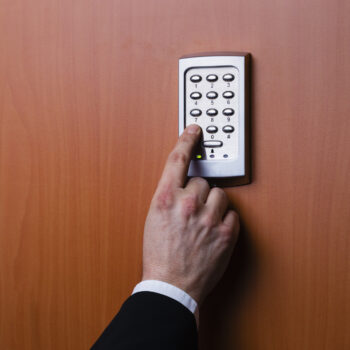Ensuring the physical security of your office is essential for protecting your staff, equipment, and sensitive information. Implementing effective security measures can help prevent theft, unauthorized access, and other security breaches. Here’s a guide to help you establish robust physical security measures in your office.
Start with a Security Assessment
Before implementing any security measures, begin by conducting a thorough security assessment. Evaluate your office’s vulnerabilities, including potential entry points, areas that require more protection, and existing security protocols. Identify any weak spots and areas where improvements are needed. This assessment will provide you with a clear understanding of your office’s security needs and help you prioritize your efforts.
Install Access Control Systems
Access control systems are crucial for regulating who can enter your office and specific areas within it. Install electronic keycard systems or biometric readers to ensure that only authorized personnel have access to sensitive areas. Consider using different levels of access for various employees based on their roles and responsibilities. Regularly update access permissions to reflect changes in staff and roles, and promptly deactivate access for former employees.
Secure Entry and Exit Points
Your office’s entry and exit points are critical areas for security. Ensure that doors and windows are secure and equipped with high-quality locks. Install security cameras at key entry points to monitor activity and deter potential intruders. If possible, use reinforced doors and windows, especially for areas that house valuable equipment or sensitive information. Regularly check and maintain these security features to ensure they remain effective.
Implement Surveillance Systems
Surveillance systems play a vital role in monitoring and recording activities within and around your office. Install security cameras in strategic locations, such as entryways, parking lots, and common areas. Ensure that cameras are positioned to cover all potential blind spots and provide clear, high-resolution footage. Regularly review surveillance footage and keep recordings for a reasonable period to aid in investigations if necessary.
Enhance Physical Barriers
Physical barriers can help prevent unauthorized access and protect sensitive areas within your office. Use barriers such as fences, gates, and security doors to restrict access to critical areas. Consider installing security bollards or barriers in parking areas to prevent vehicle-related threats. Ensure that these barriers are well-maintained and effective at deterring unauthorized entry.
Conduct Regular Security Training
Training your staff on security protocols and procedures is crucial for maintaining a secure office environment. Conduct regular security training sessions to educate employees on recognizing and reporting suspicious activities, handling security breaches, and following access control procedures. Ensure that all staff members understand their roles in maintaining office security and are aware of the protocols in place.
Secure Sensitive Information
Protecting sensitive information is as important as securing physical spaces. Implement secure storage solutions for confidential documents, such as locked filing cabinets or safes. Ensure that employees are aware of the importance of securing sensitive information and follow proper procedures for handling and disposing of confidential documents. Regularly audit information storage practices to ensure compliance with security protocols.
Maintain a Clean and Organized Environment
A cluttered or disorganized office can create security risks by obstructing visibility and making it easier for unauthorized individuals to hide or access restricted areas. Keep your office clean and organized to minimize potential security hazards. Ensure that pathways are clear, and that any items or equipment that could obstruct security measures are properly stored.
Develop an Emergency Response Plan
An effective emergency response plan is essential for addressing security incidents and other emergencies. Develop a plan that includes procedures for responding to security breaches, evacuating the office, and contacting emergency services. Conduct regular drills to ensure that all employees are familiar with the plan and know their roles in an emergency situation. Update the plan as needed to reflect changes in your office layout or security protocols.
Regularly Review and Update Security Measures
Security is an ongoing process, and regular reviews are necessary to ensure that your measures remain effective. Periodically reassess your office’s security needs, update access controls, and review surveillance footage. Stay informed about new security technologies and best practices, and make adjustments to your security measures as needed. Regular updates help ensure that your office remains protected against evolving threats.
Final Thoughts
Implementing robust physical security measures is crucial for safeguarding your office and its assets. By starting with a security assessment, installing access control systems, securing entry points, implementing surveillance, enhancing physical barriers, conducting regular training, securing sensitive information, maintaining an organized environment, developing an emergency response plan, and regularly reviewing your measures, you can create a secure and well-protected office environment. Proactive and comprehensive security practices help protect your staff, equipment, and information, ensuring a safe and efficient workplace.
